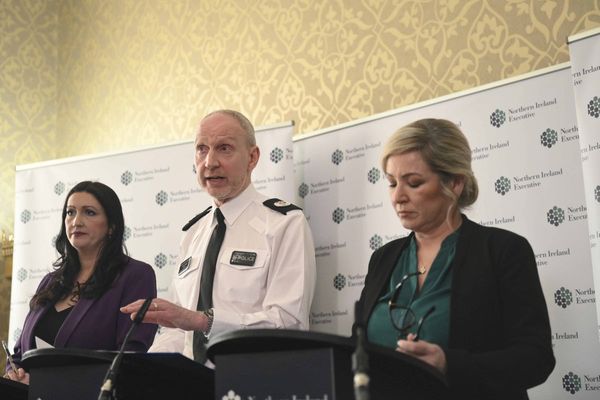
A record-breaking heatwave in Western Australia has days to run before it shifts eastwards, combining with moisture left over from ex-tropical cyclone Tiffany to create some clammy days and nights for southern cities.
Perth on Friday reached 40C for a fourth consecutive day, matching the record sequence reached in the WA capital on only three previous occasions, including around last Christmas. The Bureau of Meteorology was predicting a fifth 40C-day for Saturday.
Thursday’s top of 40.5C was the eighth day above 40C this summer, beating the previous record of seven for the season in Perth and with more likely, Ben Domensino, a senior meteorologist at Weatherzone, said. Just after noon, local time, the temperature topped 40C for the ninth time this summer and peaked at 41.7C.
“It could get to 10 by the end of this week, and then we’re staring down the barrel of another five weeks of summer,” he said, adding another heatwave looked set to build in about a week’s time. The presence of a low-pressure trough off the west coast is critical for stoking the high temperatures.
“The trough helps delay the sea breeze,” Domensino said. “And we’ve got a very intense air mass inland that’s causing the temperatures when they are hot to be extremely hot.
“And then, underpinning all of that is climate change, which is making extreme heat like this more likely,” he said, adding maximum temperatures in south-western WA had warmed 1.4C since 1910.
The current set-up is also linked to last week’s 50.7C at Onslow in WA’s Pilbara region. That reading matched the hottest temperature ever recorded in Australia, according to the preliminary data. Two other sites notched 50C-plus temperatures, a level only previously reported three times on standardised equipment.
“In the last few weeks, there has been a lack of monsoon cloud,” Domensino said. “So the tropics have been active over the Northern Territory, in the Kimberley, and northern Queensland but not over the Pilbara. It’s been very cloud-free this summer.”
Some of the heat roasting Perth will make its way east in coming days. The mixing with tropical moisture over the Nullarbor and elsewhere, though, will make for some unusually muggy days for Adelaide and Melbourne.
Temperatures will feel a few degrees warmer than the forecast tops, with those attending or playing at the Australian Open likely to find the humidity taxing, particularly early next week.
“It’s the kind of heat that can surprise people,” Domensino said.
The bureau’s forecast for the Victorian capital is for a week of days reaching 30C or more. Sydney, though, is in for a continuation of its mostly muggy and damp days, with humidity levels well above the norm for January.
Along with those sultry days, there’s more rain on the way. Parts of South Australia should collect a summer’s worth of rain in a week, Domensino said.
“Between now and Sunday, it’ll be wet in central and southern Australia, and then as that trough carries moisture east from the beginning of next week, we’ll see rain spreading over New South Wales, Queensland and Victoria,” he said. “We could see weekly accumulated totals next week getting upwards of 50 or 100mm … so we could see some renewed flooding.”
Heavy rain and #thunderstorms are forecast across large parts of northern and central Australia over the coming days. Flash #flooding is possible with the storms, especially through central Australia.
— Bureau of Meteorology, Australia (@BOM_au) January 21, 2022
Latest forecasts: https://t.co/0NXgulUuRg. pic.twitter.com/ynmr16cED7
Remote towns, such as Tilpa on the Barwon-Darling River in NSW, were among the areas where floods were under way. The area was expected to have major flooding on Friday, about two years after a multiyear drought broke, when the river ceased to flow leading to mass fish kills.
Prior to this summer, the only other times Perth has notched four days in a row of 40C or warmer weather came in February 1933 and February 2016.
Generally, February is Perth’s hottest month, said Robert Lawry, a senior hydrologist at the bureau’s WA office.
The previous summers with seven 40C days came in 2006-07, 2015-16 and 2019-20, a tally already exceeded this summer.
“There’s a pretty obvious trend there,” Lawry said. “They’ve all happened in the last 20 years.”
The odds of enduring very hot temperatures have already increased substantially as a result of climate change, he said, adding, “this kind of thing is what you can expect to happen more frequently”.







